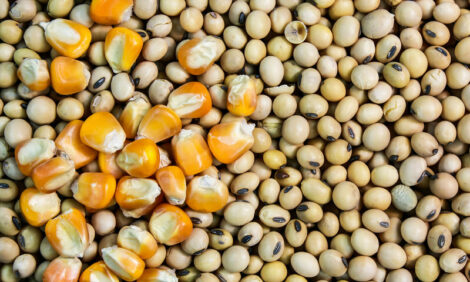



Inflammation and stress puts pressure on sow longevity
Sow longevity is no longer a given in US swine herds. As productivity demands have increased, the number of parities in which a sow remains productive in the herd has decreased.In recent years, producers have focused on pigs per sow per year and number of pigs weaned to maximise profits, but increased litter size puts pressure on sow longevity. As productivity demands have increased, the number of parities in which a sow remains productive in the herd has decreased.
“We are not getting enough of our gilts and first-parity animals actually into the herd…which increases the cost for each piglet born,” Mark Wilson, PhD, a swine reproductive physiologist at Zinpro, told Pig Health Today.
In addition, producers lose the profit opportunity associated with raising pigs from those females in parities two through six, when colostrum quality is maximised, Wilson said, adding the industry needs to do a better job of preparing gilts to enter the sow herd.
“We have to learn the best techniques and the best feeding regimes to get these animals prepared so they can stay in the herd longer,” he said.
Factors to consider
The two biggest causes of reduced longevity that Wilson sees in first-parity females are poor reproductive performance (lower birthweights, increased stillborns, more days to oestrus) and lameness.
One management tool that can help with productivity is to fine-tune heat checking. Wilson said boars used for heat checking need to have a healthy libido to stimulate gilts. Also, it’s critical that gilts have enough time to interact with boars.
“Direct contact is very, very important,” Wilson said, noting that fence-line contact may not provide enough stimulation to bring gilts into heat.
Lameness is a big issue in terms of longevity, both in gilts and in first-parity sows, Wilson said. Lameness often centres on inflammation, which can create a long-term effect on metabolism. Any insult to the body is going to release pro-inflammatory mediators, he explained. Those mediators are good in the short term, but chronic inflammation can cause production issues.
“Chronic inflammation decreases longevity. For example, sows that have been lame for a long time are more likely to have autoimmune reactions, telling them to up-regulate inflammation,” Wilson said. “That impacts the nutrients that are left for lactation, growth and even reproductive performance.
“Inflammation is a very complex topic, because not everything gives the same signals, and you have a lot of different responses,” Wilson added. “The quicker we can get the problem solved, the quicker we can get back to normal production. The human responsibility is to make sure we’re doing all we can to cut down on stressors and inflammatory issues.”
Inflammatory symptoms include fever, redness, swelling, loss of appetite, lack of mobility and other problems.
Inflammation due to lameness is easier to identify because sows demonstrate it in how they stand or move around. They can’t find a way to get comfortable, and they tend to lie down faster than other sows in the farrowing room or gestation pen, Wilson said. Producers and their veterinarians can pick up on these cues and help find solutions for those animals.
Search for solutions
Wilson said the first line of attack to lameness is to pick gilts that are structurally sound. Employees need to be trained to identify the ideal structural design for feet and legs and make sure gilts are able to walk easily and correctly. Make sure hooves are in good shape, too.
“The better you can develop those hooves and the keratinocyte tissue in the horn tissue, the more durable and resilient they are to preventing damage,” Wilson said, adding that prevention is more effective than treatment.
“Once you do get a damaged foot, it’s tougher to get the keratinocytes to fill in and actually grow like they’re supposed to, and the bigger problem is that you also have to reduce the inflammatory issues.”
Certain types of feet and leg lesions, like white-line lesions, open the door for bacteria, Wilson said. Antibiotics can be helpful in these cases, provided a veterinarian has determined the most effective antibiotic to use against the targeted bacteria. When it comes to claw lesions, however, there isn’t enough blood flow in the feet to get the antibiotic where it’s needed to combat the inflammation. In these cases, minerals are preferred.
“A mineral’s structure is attached to amino acids, so it increases the potential of boosting the immune system,” Wilson said.
It’s important to remove potential stressors, too, he pointed out. “Often, vaccinations are given too close to the time we want to breed gilts. When that happens the titer goes up, which means they’re getting a greater inflammatory response, but reproduction decreases. Vaccinate gilts a minimum of 14 days to 21 days from their last vaccination, and you’ll get a much better breeding response from your gilts.”
Water and nutrition also are important factors when it comes to sow longevity. He said a neutral to slightly acidic pH is the best water for preventing bacteria from getting into the water lines.
“The more stressors we can reduce, and the more we can have the immune system running at a stable level, the better,” Wilson said. When things are out of control, it impacts growth performance and reproductive performance. The sow will do all she can to take care of and nurse her pigs, but if inflammation is present, it will impact her long-term longevity.
“Inflammation is a major modifier of production and metabolism,” Wilson emphasised.
“Reducing inflammatory issues improves productivity and will improve longevity in the herd.”






